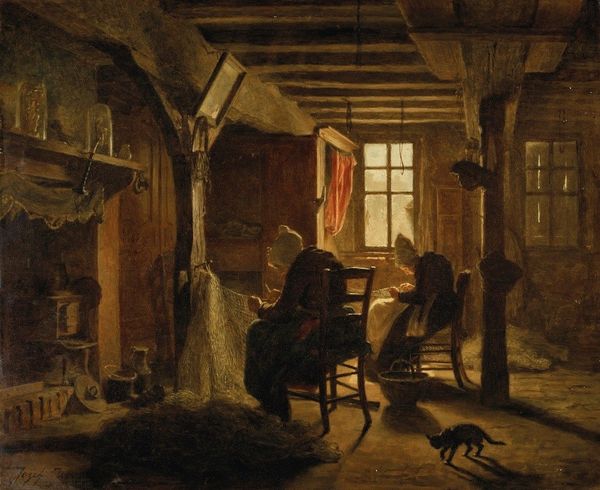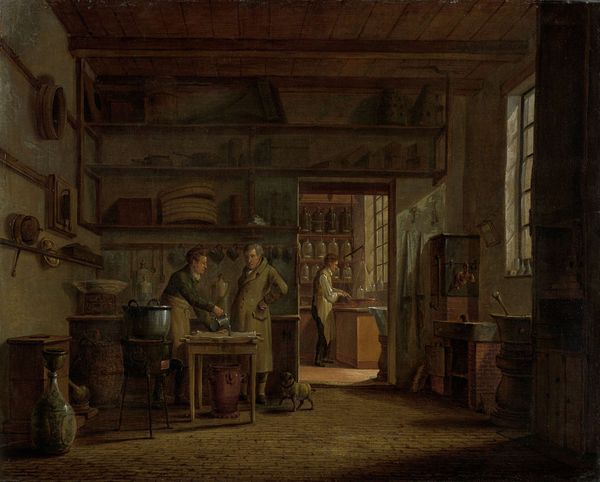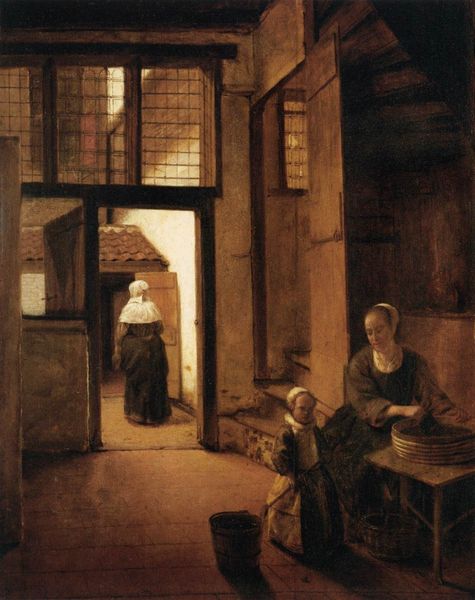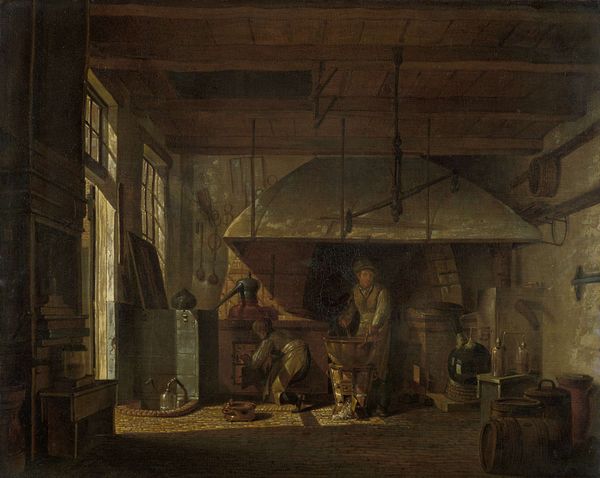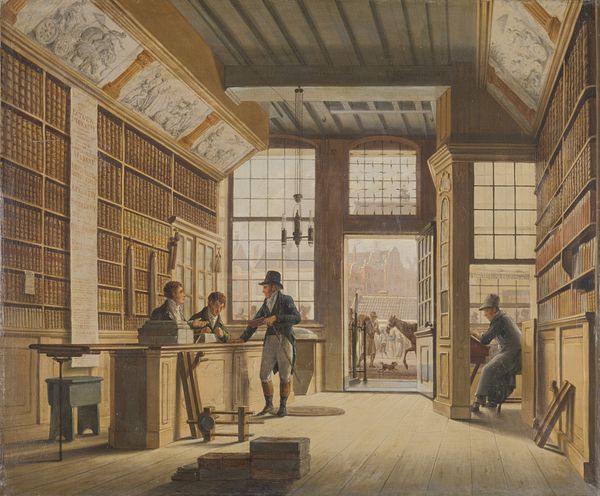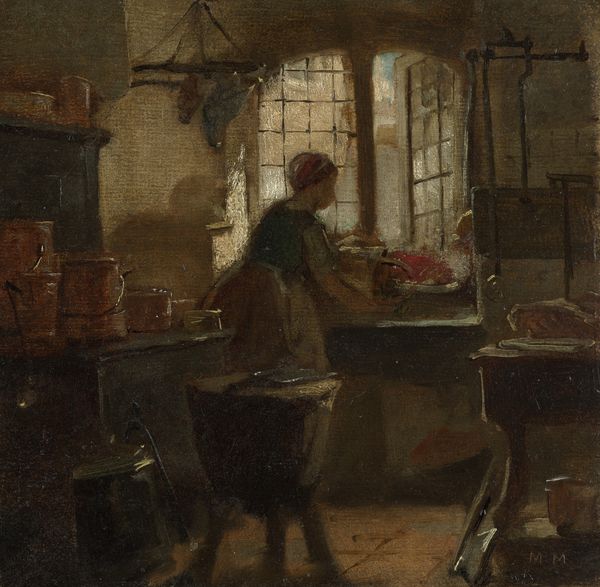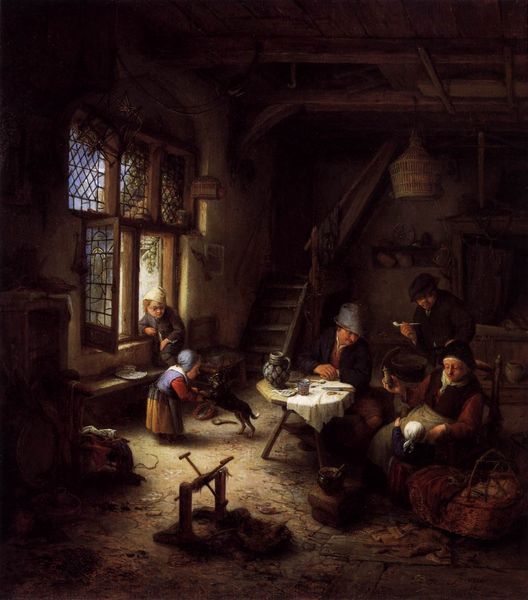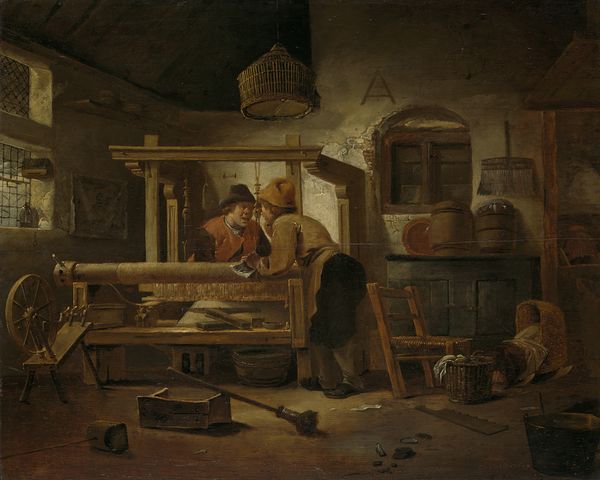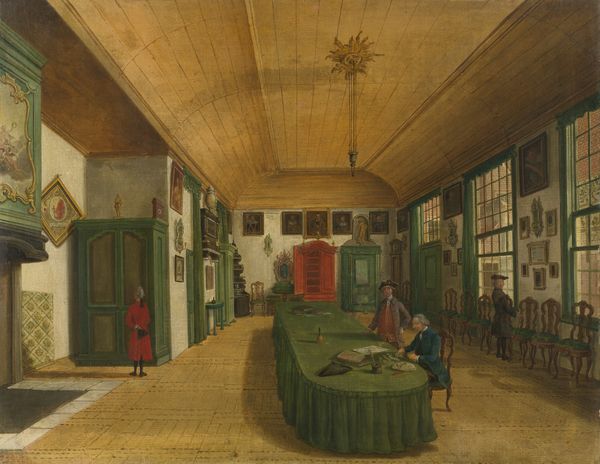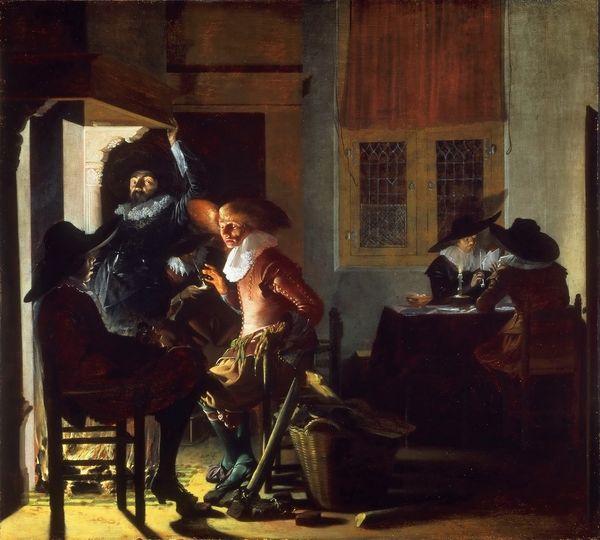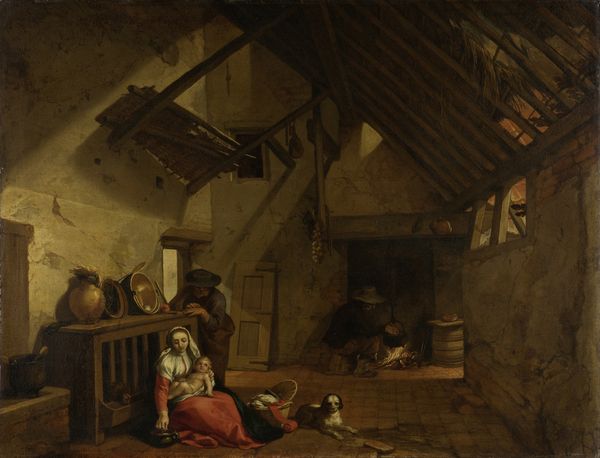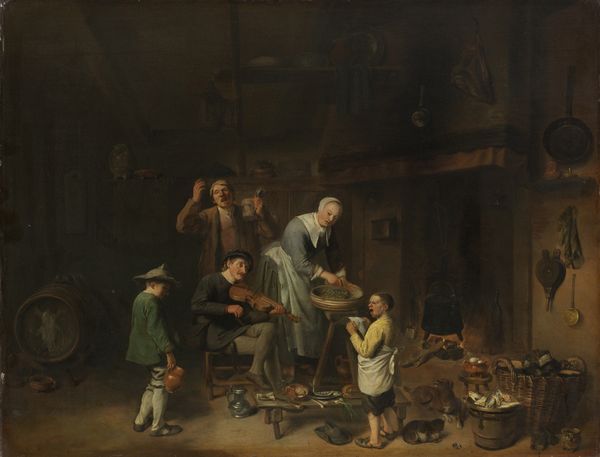
painting, oil-paint
#
portrait
#
narrative-art
#
dutch-golden-age
#
painting
#
oil-paint
#
genre-painting
#
realism
Dimensions: height 60 cm, width 49 cm, depth 9 cm
Copyright: Rijks Museum: Open Domain
Editor: This painting, "Interior with Woman at the Spinning Wheel" by Esaias Boursse, dates to 1661 and is rendered in oil paint. It's incredibly dark; the composition seems entirely focused on this small interior space with its rather aged tile floor and an intriguing window arrangement. What are your initial thoughts regarding the way Boursse constructed this scene? Curator: Note the carefully considered light source—the high windows providing the composition’s luminance, effectively contrasting textures and forms within the confined space. Observe the interplay between geometric exactness in the windows and the more organic shape of the figures. This, for me, highlights the dialectical nature of domestic order. What specific element strikes you most profoundly, given its spatial placement? Editor: The way the artist directs the gaze towards the background despite the overall darkness. I’m drawn to the small details of everyday life – the dishes near the fireplace and even the unseen figure partially present in the distant doorway. It's a compelling depiction of domestic space. But it's all very… murky. Curator: The chiaroscuro—the stark contrast of light and dark—is paramount, is it not? It emphasizes the phenomenological experience of inhabiting the depicted space. This isn’t merely representational, it is a study in visual relationships—light to dark, geometrical to organic. Does this intense focus not compel one to consider what aspects of mundane life the artist chooses to abstract or, more accurately, amplify? Editor: I think so! It really causes one to focus in a different way. The way the visual weight is so skillfully handled, despite the muted tones is something to keep in mind going forward! Curator: Indeed, this offers profound insight into the Dutch Golden Age’s exploration of light and composition. By exploring what is literally seen in art, we unlock how an artist, and we ourselves, comprehend deeper significance.
Comments
No comments
Be the first to comment and join the conversation on the ultimate creative platform.
